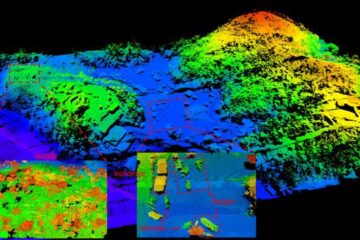New magnetic techniques for microstructural characterisation of steels

There is no doubt that steel is one of the materials that has largely contributed to the technological and economical development of the twentieth century. Its mechanical and magnetic properties are determined by its chemical composition and the microstructure obtained in its manufacturing process. Traditionally, it has been necessary to mechanically destroy the material in order to analyze its microstructure by means of a microscope, i.e. to get a small sample, to polish it and to attack it with chemical compounds. Nowadays, significant progress is being made to magnetically obtain information about steel’s microstructure. Besides, due to their non-destructive nature, magnetic techniques allow us to skip destructive mechanical techniques.
In this context, the aim of the doctoral thesis was to design an electronic system capable of determining microstructure variations in steels by means of magnetic non-destructive techniques. In the research a thorough analysis of the signals obtained by means of these techniques was made, which led to the definition of several useful parameters for the characterisation of the microstructure and mechanical properties of steels. These new techniques are based on the following principle: The steel is formed by microscopic regions called magnetic domains. When a magnetic field is applied to the material, these domains tend to grow and their walls find microstructural obstacles in their movement, such as dislocations, grain boundaries, or precipitates, which hinder their growth.
The thesis proposes a measurement system that provides several representative parameters of the movement of the magnetic domain walls. By means of this system the magnetic domains of the material themselves are used as internal sensors that record the characteristics of the microstructure. With this method it is possible to determine whether the material has a high or low dislocation density, the way in which dislocations arrange themselves, whether the material has grain boundaries or precipitates etc.
In order to evaluate the system’s sensitivity, measurements were made on low carbon steel samples with various microstructures. Its sensitivity to plastic deformation was analysed and parameters with enough resolution were obtained to quantitatively investigate the evolution of the microstructure during the thermal treatment applied to the cold rolled steels. Specifically, during the metallurgical processes of recovery and recrystallization. It is remarkable that by means of these techniques recovery processes, which are not detectable by means of traditional techniques such as hardness measurements or optical metallography, can be monitored.
This doctoral thesis opens up new technological possibilities in the field of magnetic non-destructive testing techniques applied to microstructural characterization of steels. Some significant results have been published in international journals, such as Acta Materialia and Materials Science Forum.
Media Contact
All latest news from the category: Materials Sciences
Materials management deals with the research, development, manufacturing and processing of raw and industrial materials. Key aspects here are biological and medical issues, which play an increasingly important role in this field.
innovations-report offers in-depth articles related to the development and application of materials and the structure and properties of new materials.
Newest articles

A universal framework for spatial biology
SpatialData is a freely accessible tool to unify and integrate data from different omics technologies accounting for spatial information, which can provide holistic insights into health and disease. Biological processes…

How complex biological processes arise
A $20 million grant from the U.S. National Science Foundation (NSF) will support the establishment and operation of the National Synthesis Center for Emergence in the Molecular and Cellular Sciences (NCEMS) at…

Airborne single-photon lidar system achieves high-resolution 3D imaging
Compact, low-power system opens doors for photon-efficient drone and satellite-based environmental monitoring and mapping. Researchers have developed a compact and lightweight single-photon airborne lidar system that can acquire high-resolution 3D…





















